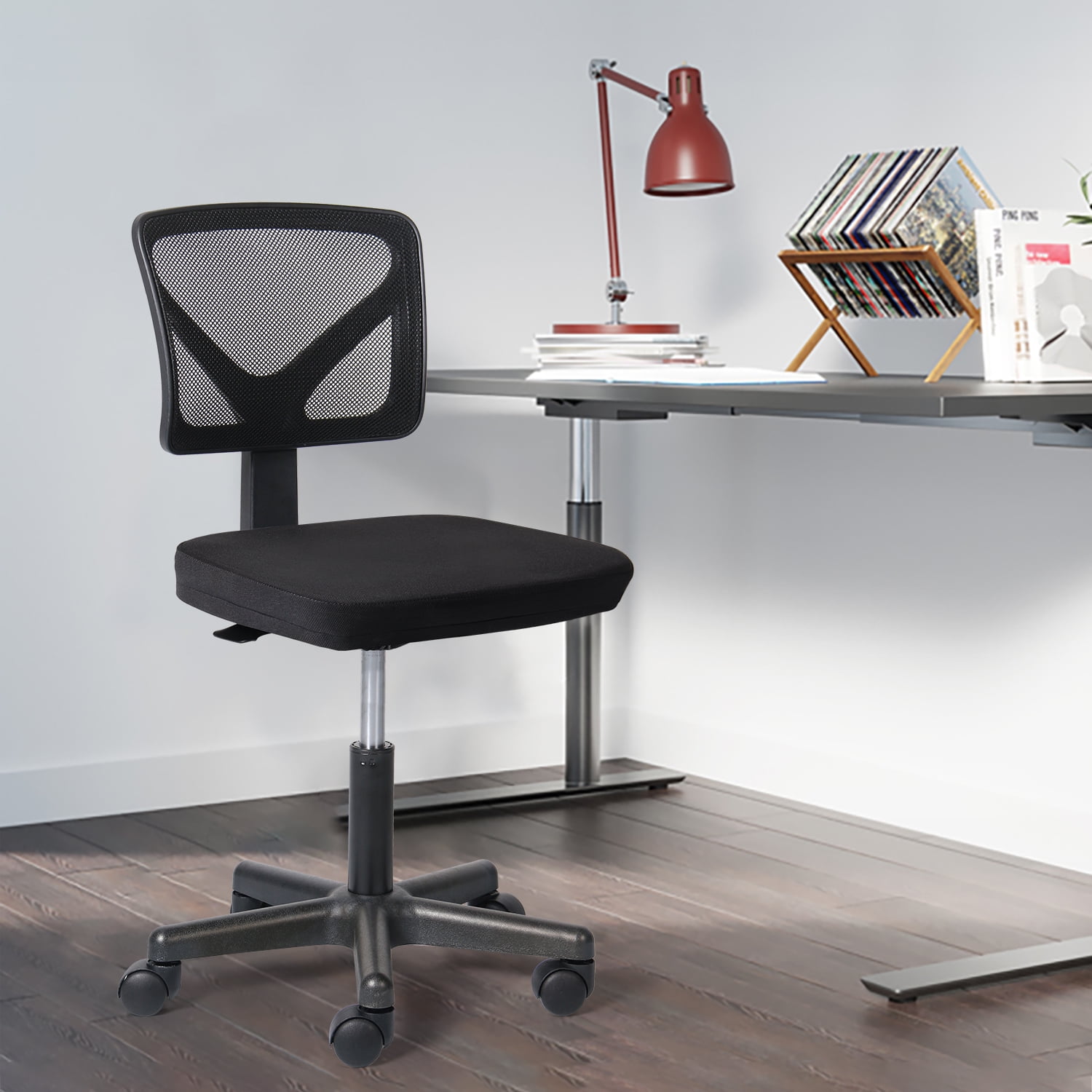User Experience and Accessibility of Armless, Wheel-less Desk Chairs: Desk Chair Without Wheels Or Arms

Armless, wheel-less desk chairs represent a distinct design choice with implications for user experience and accessibility. Their simplicity can offer advantages in certain contexts, but also presents challenges that require careful consideration. This section explores the impact of this design on user mobility and comfort, potential accessibility features, and ergonomic adaptations for optimal workspace setup.
Impact of Design on User Mobility and Comfort
The absence of wheels and armrests significantly alters the user experience. The lack of wheels restricts mobility; users cannot easily reposition themselves or the chair. This can be detrimental in large workspaces or when frequent adjustments are needed. Conversely, the fixed position can promote better posture by discouraging fidgeting and constant shifting. The absence of armrests encourages a more upright posture, reducing slouching and promoting better spinal alignment. However, it can also be uncomfortable for users who rely on armrests for support, particularly those with upper body weakness or conditions like arthritis. For instance, a user with limited mobility may find it difficult to rise from a chair without armrests, while someone with repetitive strain injury might experience increased discomfort without arm support. Conversely, an individual who works at a standing desk and only occasionally sits might find this design perfectly suitable.
Incorporation of Accessibility Features
Several accessibility features can enhance the usability of armless, wheel-less chairs for individuals with disabilities. For users with limited lower body mobility, the incorporation of a lever-assisted rise mechanism could greatly improve ease of getting in and out of the chair. This mechanism would provide additional support and reduce strain. Similarly, adjustable height mechanisms allow users of varying heights to find a comfortable and ergonomic seating position. For users with visual impairments, contrasting colors or textured surfaces could aid in identifying the chair’s boundaries and improving safety. Consider a chair with a robust, stable base for users with balance issues. A wider seat base can also improve stability and provide more comfortable seating for larger individuals.
Adapting Workspace Ergonomics
Optimizing workspace ergonomics for users of armless, wheel-less chairs requires careful planning. The chair’s height should be adjusted so that the user’s feet are flat on the floor, with knees bent at a 90-degree angle. The monitor should be positioned at eye level to prevent neck strain. A supportive lumbar support cushion is highly recommended to maintain proper spinal curvature and reduce back pain. The keyboard and mouse should be placed at a comfortable distance to avoid reaching and strain. Imagine a user seated with their feet flat on the floor, back straight against the chair’s back, and elbows bent at 90 degrees while typing. This illustrates the ideal posture and arrangement. The workspace should also be organized to minimize unnecessary reaching and movement.
Rewritten User Experience Description, Desk chair without wheels or arms
This armless, wheel-less desk chair offers a unique user experience with both advantages and disadvantages.
* Improved Posture: The lack of armrests encourages an upright posture, promoting better spinal alignment and reducing slouching.
* Reduced Fidgeting: The fixed position minimizes constant shifting, allowing for greater focus and concentration.
* Limited Mobility: The absence of wheels restricts movement, which may be inconvenient for some users.
* Potential Discomfort: The lack of armrests can be uncomfortable for individuals who require arm support.
* Space Saving: The compact design requires less floor space than chairs with armrests and wheels.
